Daytime running lights.
Let there be GOST
After introduction into Traffic rules concepts"Daytime running lights" the market was literally inundated with all sorts of light devices, which, if desired, the driver can install on his car and thereby make it more visible on the road in the daytime, without resorting to standard system lighting. But is everything as simple as it seems?
text: Oleg Kalaushin / 15.12.2011
Almost a year has passed since the introduction of the new amendments. Year, as all, without exception, drivers (except for horse-drawn carts) must turn on dipped headlights or fog lights in the daytime. Many include and thereby actually prevent a huge number of road accidents, especially outside settlements. However, others ignore this point of traffic rules, citing the fact that in this way they extend the service life of standard lamps, and even save fuel. The weight of such an argument, of course, is doubtful, given why and for what this amendment was introduced to the traffic rules, but nevertheless, these speculations have grounds. The dipped-beam lamps burning around the clock really live almost half as much and, as a rule, burn out at the most inopportune moment - at night. Changing the lamp at night on the track, and even in the rain, is a dubious pleasure. And if you consider that in order to do this, on many modern cars you need to remove the headlight itself ... Yeah, then you really think about how to delay this "pleasure".
Now for the fuel. Its consumption is true, albeit not much, but increases. After all, the generator must try with a vengeance, thereby taking away the power from the engine. And additional power means additional fuel consumption, on average about 1–3%, depending on engine power. That is, approximately 100 g of gasoline per 100 km of run. On the scale of one car, there is not much, but if these 100 g are multiplied by the number of cars in at least one city, the numbers will be impressive.
But what about those who do not want to violate traffic rules, and care about the safety of lamps and world oil resources? The solution to the problem may be additional (DRL). As a rule, all of them are made on LEDs, and therefore their electricity consumption is minimal, which means that fuel consumption practically does not change. In addition, if we are talking about certified kits, then, when correctly connected to the electrical circuit of the car, they turn on themselves when the engine is started, and turn off automatically as soon as the headlights are turned on, that is, according to GOST for daytime running lights. However, GOST R 41.48-2004 "Uniform regulations concerning the certification of vehicles for the installation of lighting and light signaling devices" stipulates not only their connection, but also the place of installation. And, as it turned out, it turned out to be the most difficult to comply with this point. Which, in fact, is confirmed by observations. Most of those additional navigation lights that you have seen are not at all there and not at all as they should be installed, and even work together with the dipped headlights.
The latter, by the way, is completely incomprehensible, because the meaning of their use in tandem with the dipped beam is completely absent. After all, you do not wear two pairs of watches on one wrist. Of course, the easiest option is to install the DRL under the bumper. In this case, it is quite easy to maintain the installation dimensions, however, given that the bumpers of modern cars are quite low, it is unacceptable to hang the lights in a place that is obviously dangerous from the point of view of safety. It will become impossible to hang a bumper when turning over a curb or a snowdrift - DRLs will be cut off at once. It remains to look for places in the bumper. Many manufacturers offer mortise designs. But the demand for them is low due to the rather complex installation. But there are much more of those who prefer hanging structures. Nice monoblocks are inserted into the slots of the grilles in the bumper, and, as they say, the trick is in the bag. But it turns out that everything is not so simple here either. For the most part, additional DRLs are quite large, which often makes it impossible to install daytime running lights according to traffic rules. And those that fit in size, as a rule, do not correspond to GOST due to the weak luminosity. In addition, many of the additional lights offered on the market today are not certified at all, which means that their installation is also illegal.
Philips daytime running lights stand out against this background. Today in their product line there are three varieties of this device - for 4, 5 and 8 LEDs. The latter implies not only different sizes, but also modes of operation. They are united by only one thing - ease of installation. The manufacturer still claims that any of these kits can be installed in two hours. Well, the stopwatch is in our hands.
The first contender for the installation was the largest device in terms of size, namely, 5 LEDs. Yes, it is Philips LED daytime lights, not LED DayLight 8, that have the largest dimensions. However, you should not be afraid in advance, they are large only in relation to other samples. Nevertheless, having tried on the "five" for all editorial cars, we were able to find a place for it only on two cars, namely Renault Logan the first phase and on the Ford C-Max. It was not possible to attach them to any other car and to comply with the installation dimensions. More precisely, one of the dimensions is 60 cm between the inner edges of the lanterns. By the way, as a rule, this parameter is the most difficult to maintain. The installation with markings and stops for photographing the entire event took about 2.5 hours.
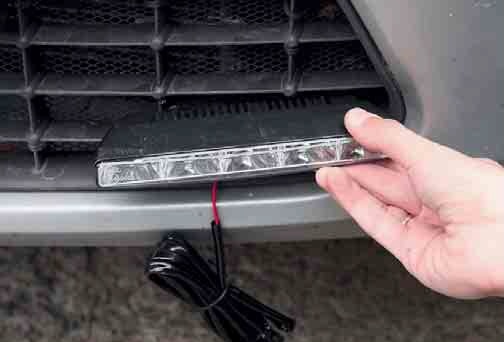
The next in line was the kit, the dimensions of which are much smaller. We are talking about LED daytime running lights Philips LED DayLight 4, that is, with 4 LEDs. The small size of this device made it possible to attach them to a much larger number of cars, but we decided to implement them on Hyundai getz... However, when installing DRLs, they encountered one difficulty. Even before the installation, in order to better measure the place, it was decided to try on these lights together with a mounting bracket. One click, and ... 15 minutes of problems to disconnect the lights themselves and the mounting bracket were provided to us. No matter how we gagged, we did not manage to separate them just as easily. The fastening of the bracket to the lantern itself is made very high quality and absolutely excludes spontaneous disconnection. In this regard, advice: do not do this until the last moment, that is, until the final installation. Otherwise, there were no problems. "Plus" wire from the switching unit to battery "plus", "minus" to "minus", on / off control wire - in parallel with "plus" side lights near the headlight - that's all. In general, the installation, apart from the disconnection problems, took no more than two hours.
Daytime running lights Philips DayLight 8, although it consisted of eight LEDs, still did not greatly exceed the "four" in size, moreover, it also favorably differed from the previous two in the following parameters. Firstly, the angle at which these DRLs are most visible has been increased by 20 degrees horizontally, which makes the car visible, even if you look at it not in the forehead, but in three quarters. Secondly, the G8 can also operate in the side light mode. That is, not completely turn off, but subside. By the way, it is in this connection that the delivery set includes two trompe l'oeil, which are inserted instead of the marker lamps. Many modern cars have a control unit for failed lamps, and so that this system does not worry, these tricks are used. That's just, we think, no one will use them. Nevertheless, the European approach is felt even in this. The installation of the "eight" is no different from the installation of other kits, and therefore it did not take more time than it was expected by the manufacturer. By the way, due to their small dimensions, they can be attached to a very large number of cars. Great, but not all.
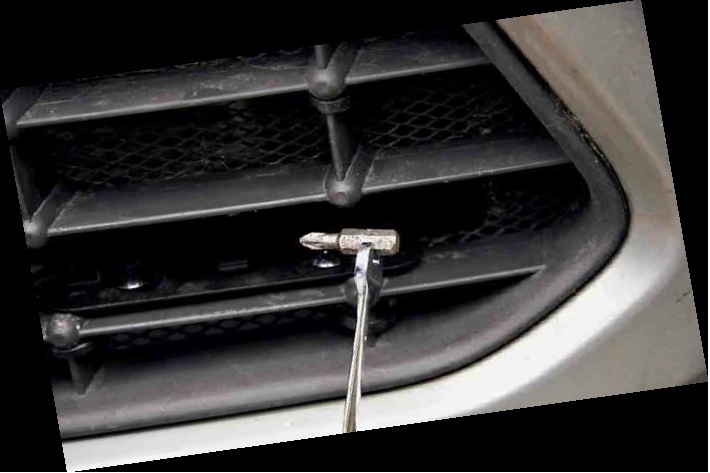
Daytime running lights price
Yes, branded kits are not cheap these days. So, for example, Philips LED DayLight 4 LED daytime running lights cost about 3,500 rubles. And Philips LED DayLight 8 is around 7000. Chinese similar DRLs are incomparably cheaper, but how long do they pass? As practice shows, their service life is short, and the radiation intensity is an order of magnitude less. Philips, on the other hand, claims that their products have a lifespan equal to that of a car. And this is believed. The first kit, which we installed back in March 2010, is still working. Only the glasses were slightly dimmed.
DRL: PROS AND CONS
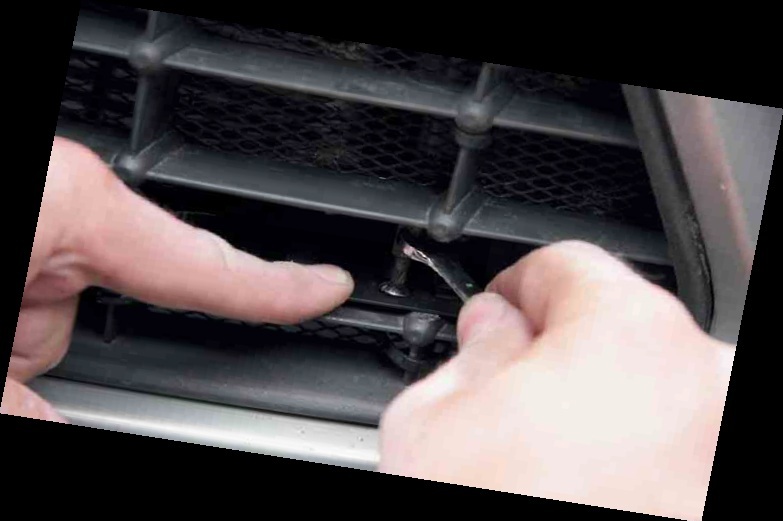
The legal requirement for the mandatory inclusion of daytime running lights in most European countries was preceded by numerous scientific studies. Their results are summarized, in particular, in the conclusion given by the Dutch Security Institute road traffic(SWOV) To the Ministry of Transport of the Kingdom of the Netherlands. The document has a large volume, therefore, we will restrict ourselves only to individual excerpts and quotations.
What is the effect of DRL?

An in-depth analysis of road accidents that occurred in the daytime showed that 50% of them were caused by the fact that the driver did not see other road users driving alongside. At intersections, this figure rises to 80%. When the headlights are on, the car is better visible against the general background and therefore more visible. In addition, vehicles with burning DRLs are perceived as being closer than they actually are. As a result, drivers are more likely to refuse risky overtaking and crossroads.
Studies show that during the daytime, DRLs significantly (up to 22%) reduce the likelihood of an accident involving two or more road users. An analysis of 57 scientific papers confirmed that, at the same time, injuries among those traveling in cars decreased by 3–12%, and among motorcyclists - by 5–10%.
Light during the day - disadvantages
The included rear parking lights "mask" the brake lights. The severity of the problem is reduced in the presence of a third additional brake light, it is excluded - when the side lights are turned off in the DRL mode. The influence of DRL on the perception of "unlit" traffic participants was also studied. It turned out that although cars with light were distinguished faster, the identification of those traveling without DRL, at least, did not deteriorate. True, there were also isolated cases when light made it difficult to perceive individual two-wheeled vehicles and pedestrians.
It was also found that the DRL effect is minimal in good weather, but increases significantly when approaching twilight and reaches a maximum in adverse weather conditions. Experiments have shown that motorcyclists and cyclists differ in the background of burning headlights, regardless of whether their DRLs are on or not. But with the lights on, faster. With their headlight, they separate themselves from the stationary environment, even in the presence of other moving headlights.
Standard headlight bulbs consume a lot of energy, which affects fuel efficiency and emissions. In absolute terms, the increase in fuel consumption is approximately the same, the relative indicators are impressive: for a truck with a normal consumption of 33 liters per 100 km - plus 1%, for a normal passenger car middle class (10/100) - plus 2%, while the modern "fuel-efficient" cost overruns will be as much as 3%. CO2 emissions, which are being diligently controlled by engine builders around the world, are increasing by 0.6-1.4%. The service life of incandescent lamps is significantly reduced. The load on battery, especially in the absence of automatic switching off of DRL. The solution to these problems was the appearance of special daytime headlights on LEDs. For a number of car models, they have already begun to be included in basic configuration, for the rest, blocks of daytime running lights are produced for self-installation.
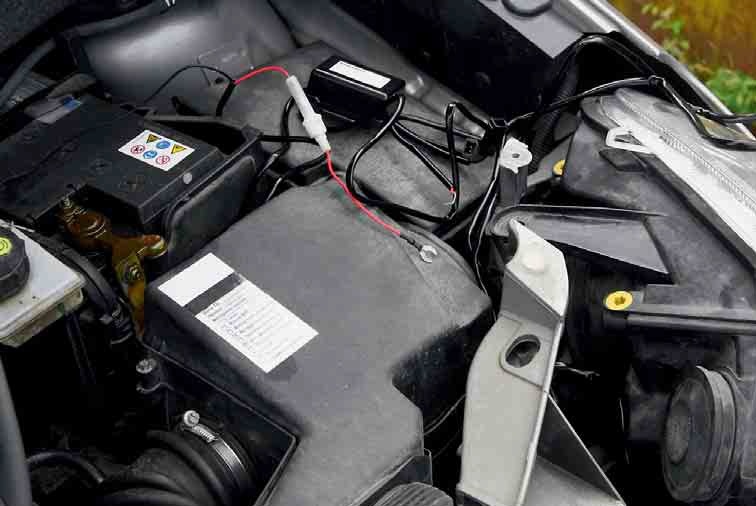
Daytime Running Lights. Electrical connection does not require any special skills. "Plus" of the control unit to the "plus" of the battery, "minus" to "minus"
DRLs can blind oncoming drivers. The range of exposure is from mild inconvenience to complete blindness. The dipped beam of standard headlights is especially dangerous. Their luminous flux must be adjusted in accordance with the manufacturer's instructions and checked regularly. The automatic adjustment, lamps corresponding to the manual and honest inspection save us from misfortune. DRL special LED headlights should not cause dazzle. But this is on the conscience of the manufacturers.
Do DRLs pay for themselves?
Not always for one car. It costs quite a lot, and an emergency situation may not develop. Which, however, is unlikely. In addition, the price of the most expensive kit is less than the cost of the smallest body repair, but on a national scale, the effect is real and easy to calculate. Experience accumulated in Europe shows that when using DRL, the number of road traffic victims decreases by 15%, serious and light bodily harm- by 10% and 5%, respectively. But the number of accidents with no harm to human life and health has not changed.
The costs of medical treatment, repairs and, alas, funerals and social benefits in the European Union are known, transparent and not burdened with corruption "taxes". Different countries use different calculation methods, but the result is always positive.

Installation of daytime running lights
For example, we will give just a few figures obtained during the preparation of 12 European countries (except for Denmark, Sweden and Finland, which had legalized DRL earlier) for the introduction of daylight. The reduction in costs caused by death and injury of people was estimated at 49 billion euros, environmental damage when using traditional lamps (incandescent and "xenon") - 10 billion euros, the total cost of additional fuel, headlamp kits and early burned out lamps - 23 billion Euro.
The most cost-effective was the transition to the use of DRL, in which drivers of old cars were allowed to use the standard low beam, and automakers were obliged to turn on LED daytime running lights in standard equipment new cars.
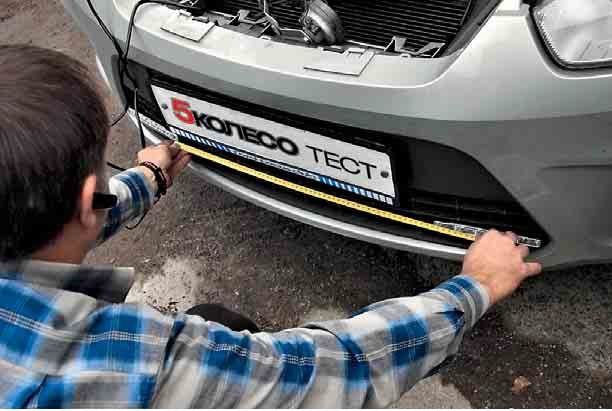
Daytime Running Lights. The distance between the running lights must be at least 60 cm
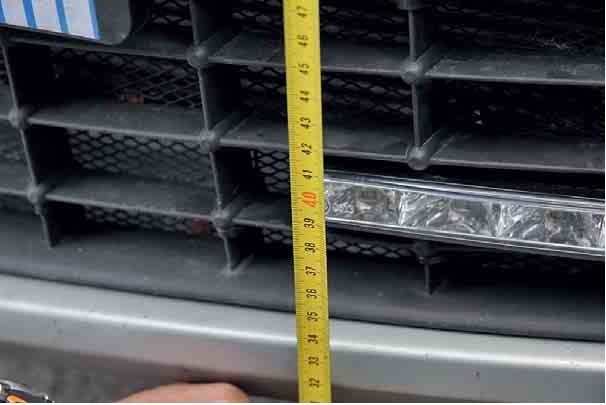
Daytime Running Lights. Not lower than 25 cm from the ground, but not higher than 150 cm

Traffic rules of the Russian Federation:
P. 19. Use of external light devices and sound signals.
19.4. Fog lights can be used:
In conditions of insufficient visibility with near or high beam headlights;
V dark time days on unlit sections of roads together with low or high beam headlights;
Instead of passing headlights in accordance with paragraph 19.5 of the Regulation.
19.5. During daylight hours on all moving vehicles for the purpose of their designation, the dipped-beam headlamps or daytime running lamps shall be switched on.
The fact that daytime running lights are currently the most popular component of vehicle exterior lighting contributes significantly to the reduction in the number of road accidents and incidents.
The movement of the car in the daytime requires the inclusion of DRLDaytime running lights are required in order to express and illuminate against the background of other vehicles during daylight hours. This perceptibly increases the vehicle's throw rate and thus, of course, increases the safety of the people who are in it.
However, before proceeding with the process of installing daytime running lights, it is imperative to find out what rules regarding of this type installation provides for traffic rules and GOST. Below are all the nuances and features that you need to know in order not to get caught by the traffic police. The 2011 Daytime Running Light Law requires all car owners to move with active headlights during daylight hours. It is also worth noting that now the concept of DRL applies to both fog lamps and dipped beam lamps.
Normative acts
Today, in addition to traffic rules and GOST, the rules for installing daytime running lights are also written in a huge number of legal and by-laws. Therefore, if you are going to install this component of the car's lighting system, be sure to read all the sources that describe the norms for this procedure.
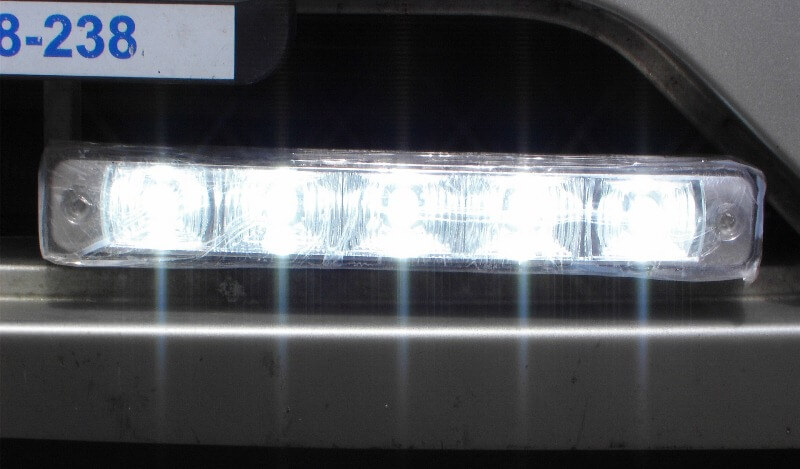 Installation of DRL in accordance with GOST and traffic rules
Installation of DRL in accordance with GOST and traffic rules The first normative act that is worth paying attention to so as not to be caught by the traffic police in violation is the decision of the Cabinet of Ministers of the Russian Federation No. 316 dated 10/05/2010.
It clearly describes all the adjustments that were made to the decision of the Council of Ministers No. 1090. In short, the main changes were as follows:
- the rules for the use of lighting devices have been changed, expanded and detailed in more detail;
- during daylight hours, the use of dipped beam lamps or running lights is mandatory on every car.
GOST, which prescribes the rules for the installation of daytime running lights R 418799 speaks of the official establishment of daytime running lights on cars and trucks. After that, a new GOST 41482004 came out, which, in fact, described the same provision, but changes were made to the concept of daytime running lights. The new definition was based on the international standard of the European Commission at the UN number 47.
 Using the low beam of a car as DRL
Using the low beam of a car as DRL Also, adjustments were introduced and in 2005 - 01/01 a resolution was issued stating that the previous GOST standards up to the P414899 document are no longer considered valid, and the new rules standardize the mandatory installation and use of daytime running lights on mechanical transport only if they comply with the norms of the European Commission at the UN.
Based on the rules of this decree, all daytime running lights must contain a special marking, which will contain information that the lighting device was installed correctly and in accordance with GOST and SDA.
Also, this marking should contain information about the type of navigation lights, as well as the place of their manufacture - otherwise, problems may arise with the traffic police.
 The difference between DRL and low beam
The difference between DRL and low beam How to mount daytime running lights in accordance with GOST
Throughout the Federation, there are special rules regarding daytime running lights, non-observance of which may lead to increased interest of the traffic police in your car. In order not to have problems with the law, you must follow all these rules strictly. It is also worth noting that the rules for installing daytime running lights prescribed in GOST and SDA of the Russian Federation in some points differ from similar standards in the Western world. Here are the basic principles in accordance with which the installation of daytime running lights in Russia should be carried out:
- Daytime running lights should be installed on a car at a height of 25 to 150 centimeters. The calculation is made from the surface of the ground on which the car is standing.
- The distance between independent units of lights must be at least 60 centimeters. However, if we are talking about installing lighting on a car with a small body (less than 1300 millimeters in width), then a distance between independent lights of 40 centimeters is allowed.
- According to traffic rules and GOST, the luminous flux intensity that should be produced by lights installed on cars or trucks must be between 400 and 800 Candelas.
 Rules for installing daytime running lights
Rules for installing daytime running lights If you are going to install daytime running lights in accordance with the SDA and GOST, then after installation, they must meet all the above requirements and parameters. Otherwise, traffic police officers have full right stop your car and claim a fine for violating the above regulations. Also in special situations, the vehicle can even be sent to the impound.
If you want your car to comply with all the rules and regulations of the traffic rules and GOST and not raise questions from the traffic police - special attention should be paid to the issue of choosing the daytime running lights themselves - a lot also depends on their brand and tapa.
The highest quality samples of this kind of products are produced by leading German manufacturers, namely Philips Osram and Hella.
It is worth giving preference to them not only because they are able to meet all state standards and regulations, but also because the lighting fixtures of these brands are the most effective and can provide you with maximum safety on the roads. In most cases, representatives of the above brands do not have any problems when they go through the inspection process at a service station. Unfortunately, the same cannot be said for home-made optical devices.
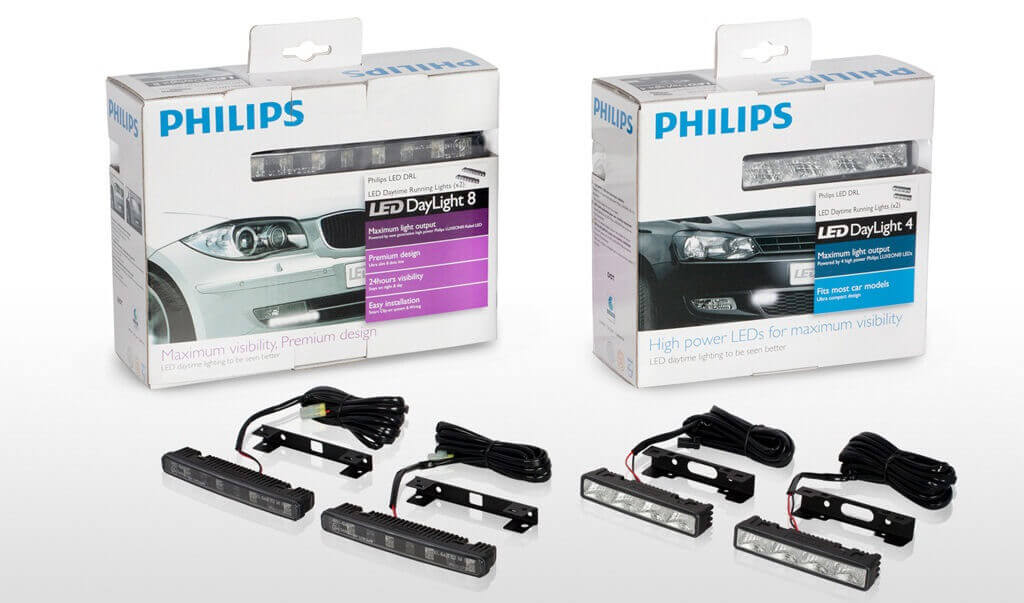 Philips daytime running lights
Philips daytime running lights The only factor that can cause you problems and inconvenience during the installation of navigation lights is the need to violate the integrity of the car's structure. As a rule, this nuisance is especially relevant for those drivers who bought a car even before the law on compulsory driving during the day with the lights on was passed.
In fact, if you are the owner of such a car and want to install daytime running lights on it, then this means that you will be faced with the need to collect a whole set of various papers and submit an official request for permission to make adjustments to the physical structure of the vehicle. Among other things, you will also have to work hard to place the DRL in your car - this will require making holes in the bumper and understanding electronics.
After November 20, 2010, at least one of the following lighting devices must be switched on on each vehicle: low beam, daytime running lights, fog lights.
All these measures were taken to reduce the number of road accidents. This assumes that cars with daytime running lights are more visible on the road, which will allow you to notice it faster and react accordingly. But in this article we will not talk about accidents on the roads, but about the regulations that govern the installation of daytime running lights (Day Running Ligth). Thereby prescribing certain places for installation day lights according to GOST for the car, as well as their relative position.
An alternative to daytime running lights when driving on public roads
After November 20, 2010, the text of paragraph 19.5 of the road traffic regulations will be significantly reduced, however, the group of vehicles that it will cover will increase significantly:
19.5. During daylight hours, dipped-beam headlamps or daytime running lights must be switched on on all vehicles in motion for the purpose of their identification.
The dipped headlights should now be on on all vehicles and always. He also had an alternative - the use of daytime running lights, which are always on.
As for the fog lights, paragraph 19.4 of the SDA has undergone minor changes:
Therefore, fog lights are also an alternative to dipped beam.
I would also like to dwell in more detail on the regulatory documents and regulated methods for installing daytime running lights prescribed in GOST.
Installation of daytime running lights according to GOST
According to GOST R 41.48-2004 "Uniform regulations regarding the certification of vehicles for the installation of lighting and light signaling devices", the installation of such devices on a car is allowed. Clause 6.19 of this GOST allows the optional installation of a daytime running light, provided that the placement will comply with the standards (see figure) and functional electrical circuit will be proper. “If installed, the daytime running lights should turn on automatically when the engine start / stop control is in the on position. It must be possible to activate and deactivate the automatic activation of daytime running lights without the aid of a tool (without the participation of additional keys - editor's note). Daytime running lights should turn off automatically when the headlights are turned on, except when the headlights are turned on for a short period of time to signal road users. "

In addition, the GOST requirement regulates the deviation relative to the longitudinal axis of the vehicle. Daytime running gear must be installed perpendicular to the direction of the vehicle with an angular tolerance of 10 degrees.
Brightness of daytime running lights according to GOST
In addition, how to correctly install the DRL, the GOST also has requirements for the level of brightness. So the brightness of the DRL should be in the range from 400 to 800 candelas. Simply put, only super-bright LEDs are suitable for such requirements. That is why most home-made DRLs do not meet the requirements, since mainly conventional LEDs or LED strip-based LED assemblies are used for their manufacture.
Now arm yourself with the knowledge of GOST on daytime running lights, additionally familiarize yourself with the ways to automatically turn on the DRL, in the article "Automatic turning on of headlights when starting the car engine".
You can also see an example of installing Philips daytime running lights with your own hands on Toyota car Corolla in the article "
More and more often on the roads there are cars equipped with daytime running lights. Moreover, about half were mounted in violation technical regulations... How to properly install DRL so as not to blind other road users and not to attract the attention of inspectors?
DRL regulations - GOST R 41.48-2004
Since Russia has accepted the terms of the European Convention on Road Traffic, the requirements of UNECE Regulation No. 48, reflected in GOST R 41.48-2004, which replaced the outdated “uniform regulations” 41.87-99, apply to the Russian vehicle fleet. What does the legislation tell us about additional lighting devices?
Traffic rules in clause 19.5. directly authorize the use of DRL:
"During daylight hours on all vehicles in motion ... the dipped beam headlamps or daytime running lights must be switched on."
It would seem - put it on, plug it in - and go!
But the same GOST prescribes a special location, mode of operation and brightness of navigation lights. And the possible interpretations are explained by the Decree of the Government of the Russian Federation No. 316 dated 05/10/2009, amending the Decree of the Council of Ministers No. 1090 of 10/23/1993.
Therefore, before you independently install the daytime running lights, we will study the requirements of the above legislative acts.
Don't feel like digging through boring articles? Then we will briefly formulate the main points regarding the installation and connection rules.
- Height from the road surface - from 25 cm to one and a half meters;
- Distance from the outer dimension of the vehicle - no more than 400 mm;
- The distance between the inner parts of the enclosures is at least 60 centimeters;
- Brightness - 400 to 800 candelas.
Operating mode - with the ignition on and the dipped / main beam headlights off, but with the preservation of the possibility of "distant blinking". Thus, the only correct connection option is to turn on the DRL when the key is moved to the "ignition" position and automatic shutdown when the side lights are turned on.
DRL operation together with BS headlights is unacceptable! Moreover, in the dark.
How to install and connect running lights
Installation of additional lighting fixtures does not require an installation center license. Therefore, we can connect them ourselves, following the instructions.
You may need to cut the bumper to stay within the dimensions. Or fix the luminaires in the air intake recess of the false radiator grille if its dimensions are sufficient. The horizontal axis is directed parallel to the roadway. Then let's move on to the electrics.
Method 1
We connect the electrical part through a fuse to the "plus" that appears when the ignition is turned on. In a wire break, using contacts 30 and 87a, we install a five-pin relay, which will be controlled from the side lights. Thus, when the key is turned to the "ignition" position, the DRLs will shine, but go out when the "marker" is turned on. Fix the negative wire to the nearest reliable "mass".
Method 2
In a situation with a ready-made control unit, we attach the "minus" to the body. Permanent "plus" - to the battery, controlling the inclusion - to the ignition. Disconnecting - to "dimensions".
In any case, remember about the need to install a fuse.
DRL advantages and disadvantages
The debate on the Internet does not stop - is it worth installing "daylight", or is it pampering and a tribute to fashion?
Proponents cite the following arguments:
- Electricity consumption in comparison with "halogens" is negligible;
- The service life of low beam lamps is increased, fuel is saved;
- The car is better visible in bright sun;
- The car looks cooler, especially if the LEDs are built into the headlights.
Opponents of the installation of non-standard lighting devices are guided by other principles:
- Generators of modern cars are designed for standard load, including lights on. In addition, on many models, the factory DRL (day running lights) turns on lamps at 70% incandescence, so there is no need to talk about a reduction in service life.
- The lamps themselves cost money, but they do not last forever. And for this amount you can buy low beam lamps for 10 years to come. And the savings in gasoline are within the measurement error.
- From a design point of view, anyone who understands modifications will immediately see the foreign structure. And those for whom all cars are the same will not pay attention to the lights.
Many motorists who installed DRL on their own did not read the Rules. Therefore, it is not uncommon to see a "UFO" on the road, which simultaneously has a dipped beam and DRLs work. And this is a traffic violation. In which, according to tradition, the "evil inspector" will be to blame, but by no means a skilled car enthusiast.
There are no ready-made solutions to the issue of tuning a car, everyone improves the car to their liking. Or leaves the original equipment.
The main thing is that the decorations do not affect traffic safety, do not blind oncoming drivers and pedestrians, comply with traffic rules, and do not provoke emergency situations.
Be attentive and careful on the roads!


